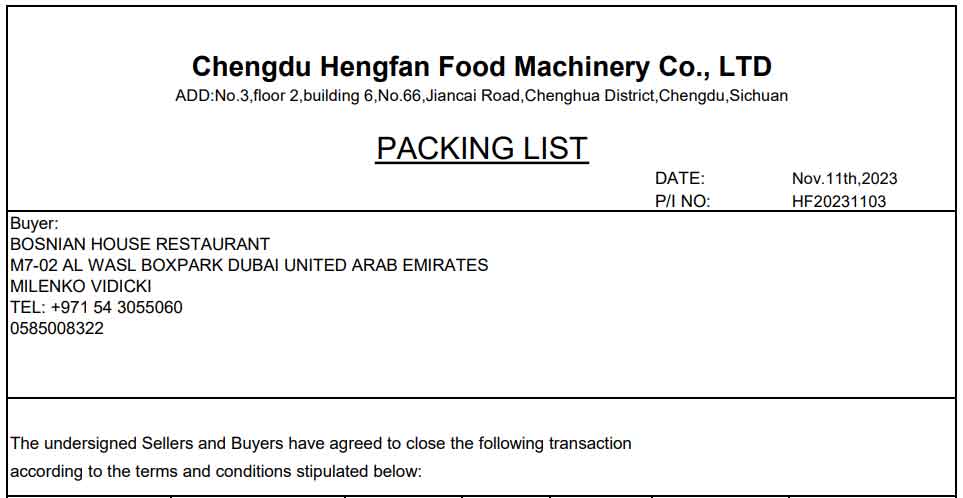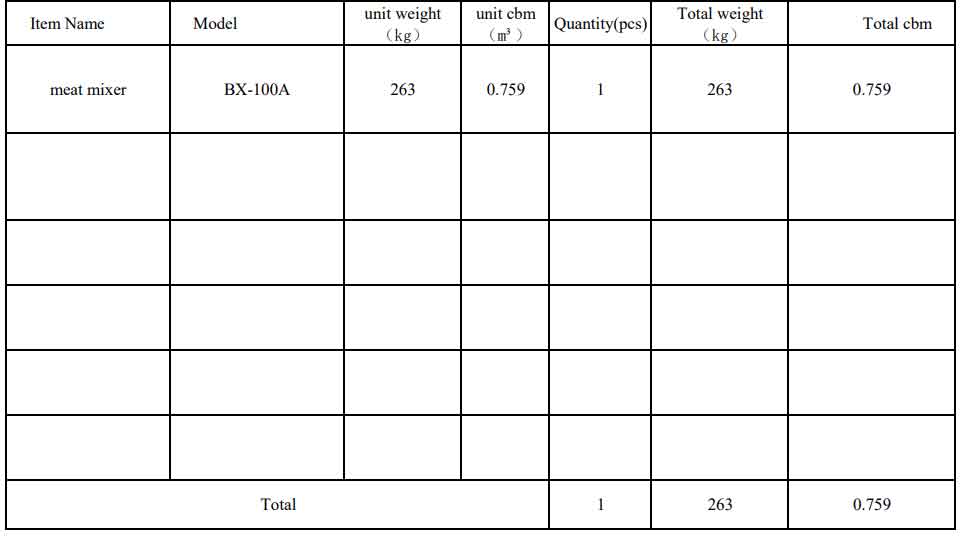In international shipping and trade, a packing list is one of the pivotal documents in ensuring a smooth and efficient flow of goods. In this article, we will explore what a shipping packing list is, its importance, and the essential elements. Furthermore, we can provide a packing list template for shipping to assist you in starting.
Table of Contents:
- What is a packing list in shipping?
- Who creates the packing list?
- Why is it important in international shipping?
- What’s the format of the packing list document?
- Is the packing list the same as the packing slip?
- What’s the difference between PL, B/L, and CI?
- What common mistakes should you avoid?
- How can Airsupply help you?
What is the meaning of packing list?
A packing list(P/L), also known as a bill of parcel or shipping list, is a document that accompanies a shipment. It serves as a comprehensive inventory of the items, allowing all parties involved in the transportation to understand the contents, quantities, and other critical details.
Generally, this packing list document finds utility in below scenarios, including:
- During inspections of box or carton contents, customs officials and evaluatorsoften demand this paperwork.
- The buyer can use it to generate invoices, verify the quality, and ascertain the quantity of products undergoing customs procedures.
- In cases of disputes between the exporter and the carrier regarding cargo measurements and weight, the packing list is also used as a supporting document.
Who creates the packing list?
Usually, the supplier or exporter should take the responsibility of sending the goods to compile and provide a packing list along with the shipment.
If the shipment consists of multiple packages, each must have a corresponding packing list. Moreover, all the information must align with the details on the commercial invoice(CI).
This document is significant for customs clearance, transportation, and inventory management, so it is in the shipper’s best interest to ensure accuracy and completeness.
Why is a packing list essential in international shipping?
Can use packing lists to create B/L
These lists provide the goods’ detailed weight, dimensions, safety precautions, and packaging specifications. Based on the information in the packing list, the freight carrier proceeds to generate and issue the bill of lading(B/L).
Need a P/L to check and clear a shipment
Customs authorities in both the exporting and importing countries require accurate information about the contents of a shipment. Failing to provide it can lead to delays or even shipment rejection.
For dispute resolution
If there are damaged goods, cargo discrepancies, or other problems, the packing list serves as a reference point to resolve disputes. It provides evidence of the condition of goods at the time of shipment.
Insurance claims
Insurance companies often require this document to assess claims and provide compensation. It offers details about the shipped items, including their total values, which can be instrumental in substantiating any claims.
What's the format of the packing list document?
Packing lists can either be in a physical or digital form, and there is no set format that you must follow. However, a typical packing list document needs to include the following key components:
Shipper and consignee details:
- The name and contact information (address, phone number, email)
- Tax identification or business registration number (if required)
Cargo information:
- Item description (name or product code)
- Quantity of each package
- Unit of measurement (e.g., pieces, boxes, kilograms)
- Value of each item (usually in the currency of the transaction)
Packing and shipment info:
- Shipping date
- Mode of transportation(e.g., ocean, air, road, rail)
- Estimated arrival date or delivery window
- Number of packages or cartons
- Package dimensions (length, width, height)
- Total weight of the shipment
- Description of the packaging materials used (e.g., cartons, pallets)
Generally, the shipper will finally sign the list document to declare its precision and entirety. It may also state that the goods are in good condition before transportation. Below is the packing list template for your reference.


Sometimes, you should adapt this packing list format to meet the specific requirements of the destination customs regulations. Therefore, it’s advisable to seek guidance from our shipping agent. We at Airsupply can ensure your packing list complies with all necessary standards and rules for your specific shipment.
Is the packing list the same as the packing slip?
The packing slip vs. packing list is almost the same document that displays the complete details of the shipments for the shipper and receiver. But there is a bit of difference.
Generally speaking, a packing slip is a document that accompanies a shipment of goods, usually included inside the package. It is intended for the recipient and contains information such as the item(s) shipped, the quantity, specifications, etc.
On the other hand, a packing list is a detailed list of all the shipped goods and is used as a reference for the shipper or carrier to ensure that the package includes all the items.
What is the difference between PL, B/L, and CI?
Packing list vs bill of lading
A bill of lading (B/L), just like a contract, is a legal document between the carrier and the shipper. It acts as a receipt for the goods and a proof of ownership. Once the cargo is loaded onto a conveyance (such as a ship or aircraft), the carrier will issue a B/L to the shipper.
In addition, a bill of lading typically contains details such as the goods type, amount, shipping routes, and special instructions. It focuses on the transportation aspects of the shipment, including the contractual obligations and risk transfer between parties.
Conversely, as we mentioned above, a packing list document mainly provides an itemized list of cargo. It focuses on the shipment’s contents, enabling the buyer or consignee to verify the order’s accuracy and facilitating inventory control and customs clearance.
Packing list vs commercial invoice
Both documents are crucial in international trade, but they serve distinct purposes.
A commercial invoice is a legal document that functions as a bill of sale and outlines the financial aspects of a trade transaction. It specifies the terms of sale, including the agreed-upon price, payment terms, and other commercial details.
Moreover, the commercial invoice is used for customs clearance and is crucial for calculating import duties, taxes, and other charges related to the shipment. As for the packing list, it provides a detail of the shipped goods and is necessary only for cargo inspection.
Another distinction between an invoice and a packing list is the recipients of these documents. If you are the sender of these documents, it’s crucial to consider the appropriate recipients.
The invoice should be directed to the individual or department responsible for payment, such as the accounting department.
The packing list, in contrast, should be sent to the division in charge of receiving the items so they can document the incoming goods.
What common mistakes should you avoid?
1. Incomplete or incorrect information:Leaving out essential messages such as product descriptions, quantities, or package dimensions.
2. Non-matching details:Inconsistencies between the packing list and other shipping documents, such as the commercial invoice or bill of lading.
3. Missing or inaccurate item name:Using incorrect or missing product identification names for your shipments.
4. Unreadable handwriting:Illegible or handwritten packing lists can lead to errors or delays.
5. Missing contact information:Failing to include complete contact information for the shipper and the recipient.
Filling out the shipping packing list with meticulous attention and thoroughness is of utmost importance. Otherwise, you may get the potential for extensive delays or substantial financial penalties amounting to thousands of dollars.
How can Airsupply help you?
Airsupply is a prominent shipping company based in China. Over time, we have successfully facilitated a diverse array of cargo shipping from China for more than 100,000 importers or shippers.
Our strong partnerships with established freight carriers enable us to secure highly competitive shipping rates. In addition, we are well-equipped with the expertise of essential documents, including container packing lists. We promise the efficient delivery of your goods, whether to the designated port or directly to your doorstep.
Being a member of us, we offer the following services to match your shipments:
- Bonded area for faster customs clearance
- Guaranteed cargo space for sea and air shipments
- Weekly updated shipping rate for container, air, and ocean freight
- Self-owned warehouses in China and the USA for seven days of free storage
- Mature sensitive cargo and dangerous goods delivering supply chain, like international vape product shipping.




